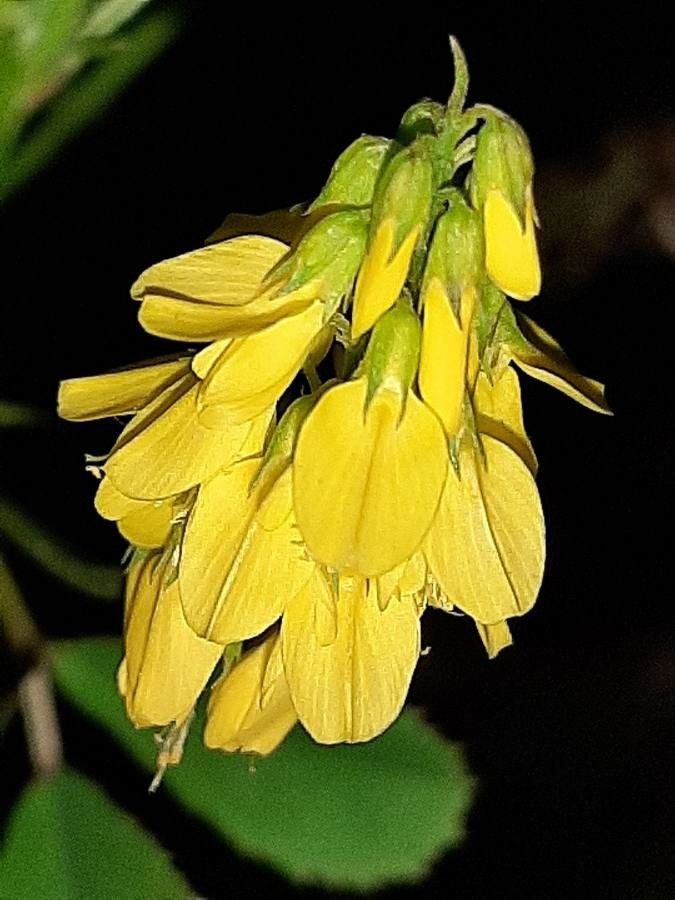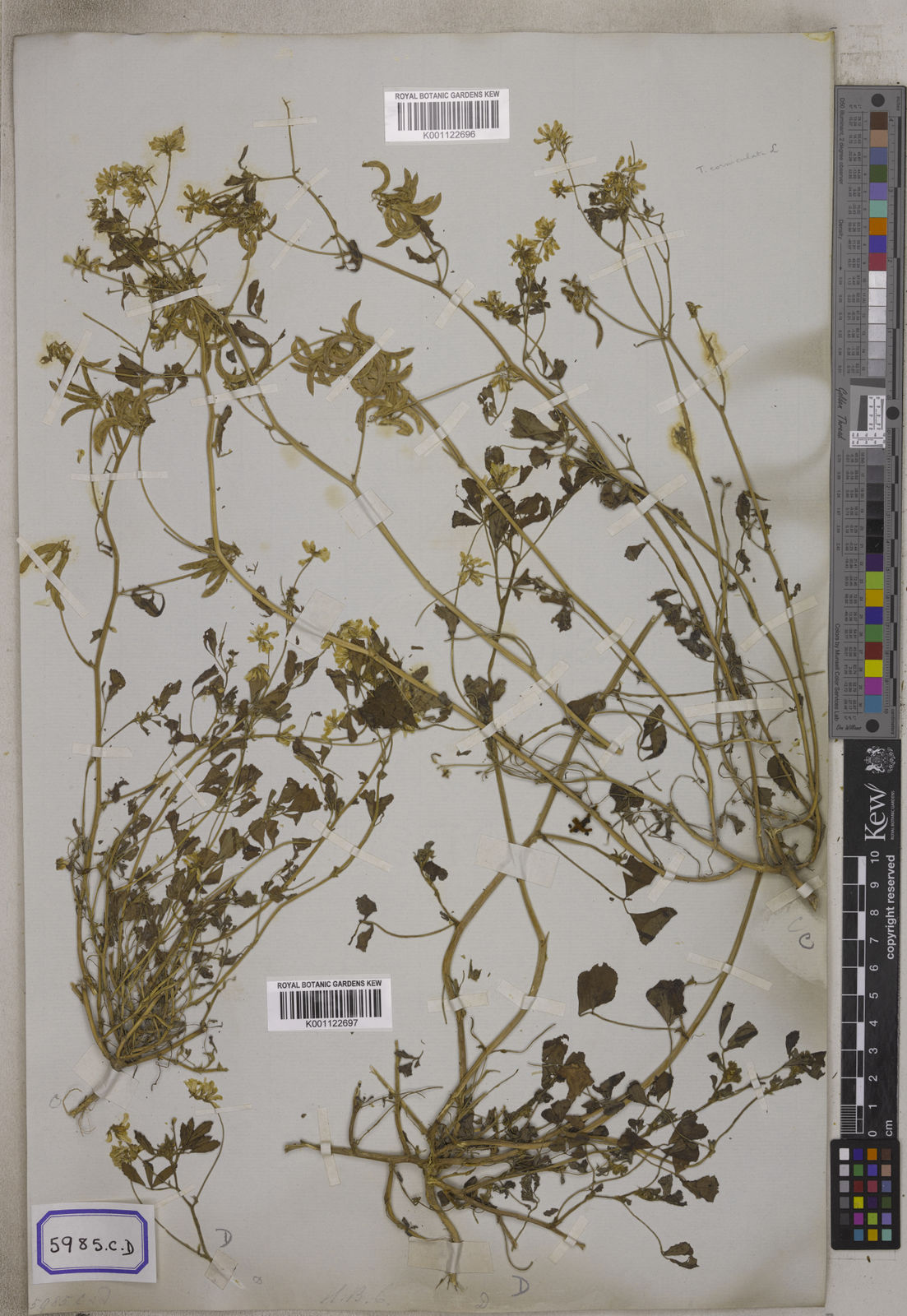Sweet Fenugreek
trigonella esculenta
Also known as: ["Wild Fenugreek","Wild Greek Hayseed"]
Overview
A herbaceous annual plant in the Fabaceae family, known for its aromatic seeds and leaves, often used in culinary applications.
Benefits & Perks
["culinary herb","fragrant flowers","edible fruits"]
Botanical Classification
| Phylum: | Magnoliophyta |
| Class: | Magnoliopsida |
| Order: | Fabales |
| Family: | Fabaceae |
| Genus: | Trigonella |
| Botanical Name: | Trigonella esculenta |
Plant Characteristics
Basic Information
- Category: Herbs & Weeds
- Suitable Location: outdoor garden bed in a sunny spot, or container with good drainage
- Suitable For:
- Is Weed: No
- Allergenicity: low
Environmental Needs
- Climate: {"temperatureRange":"10–30°C"}
- Hardiness: {"zones":"7–10"}
- Misting: rarely required, only if ambient humidity is very low
- Drainage: Fast-draining to prevent waterlogging.
- Soil Type: Well-draining, loamy soil with added organic matter.
Maintenance Level
- Maintenance Level: low
- Toughness Level: moderate
- Pruning Frequency: As needed, typically every 2–3 months or after flowering.
- Pruning Intensity: Light to moderate; avoid heavy pruning unless necessary.
Care Details
Ideal Sunlight Coverage:
Full sun (6–8 hours/day); tolerates partial shade in hot climates.
Sunlight Tolerance Tips:
Acclimate gradually to intense sunlight; protect from harsh afternoon sun; adjust placement based on seasonal light changes.
Care Requirements
Care Difficulty
easymoderate
Sunlight
full sun to partial shade
Rotate plant for even growth; use sheer curtains to filter intense light; avoid direct sun during peak hours.
Watering
every 7–10 days during active growth, reduce in winter
Water thoroughly but infrequently; ensure soil dries between waterings; avoid wetting foliage.
Soil
well-draining, loamy soil with moderate organic content
pH: Slightly acidic to neutral (pH 6.0–7.0).
Use a mix of potting soil and perlite; avoid heavy clay soils; ensure pots have drainage holes.
Temperature
Prefers cool to moderate temperatures (60–75°F/15–24°C); tolerates light frost.
Avoid sudden temperature shifts; protect from drafts; maintain consistent room temperature.
Fertilizing
every 4–6 weeks during growing season
Apply fertilizer after watering; flush soil occasionally to prevent salt buildup; stop fertilizing before flowering.
Propagation
Methods
Seed propagation is most common; stem cuttings can also be used.
Step-by-Step Propagation Guide
- Prepare medium.
- Sow seeds or take cuttings.
- Maintain moisture.
- Provide warmth.
- Transplant once established.
Best Time: Spring or early summer when temperatures are mild and growth is active.
Environment
Warm (70–75°F/21–24°C), high humidity, and bright indirect light.
Medium
Well-draining seed starting mix or cactus mix with perlite.
Hormone
Optional for cuttings; rooting hormone can improve success rate.
Timeline
Seeds germinate in 1–3 weeks; cuttings root in 3–6 weeks.
Tools Needed
Seed trays, pots, rooting hormone, misting spray, heating mat.
Quick Tips
Use fresh seeds for best germination; keep soil consistently moist; provide bottom heat for faster rooting.
Pruning & Repotting
Pruning Guide
Method
Pinch back tips to encourage branching; trim selectively to shape the plant.
Pruning Plan
Light pruning to maintain shape and encourage bushier growth; remove dead or damaged stems.
Tools
Pruning shears, sharp scissors, gloves.
Checklist
Clean tools; prune dead/damaged growth; shape as desired; dispose of clippings.
Repotting Guide
Best Season
Spring, before the active growing season begins.
Pot Size
Move to a pot 1–2 inches larger in diameter; avoid overpotting.
Method
Remove plant gently; trim roots if crowded; replace with fresh soil; ensure good drainage.
Suggestions
Repot every 2–3 years or when roots fill the container; beneficial for mature plants.
Checklist
Choose new pot; prepare fresh soil; handle roots carefully; water after repotting.
Advanced Care Tips
Watering Mastery
Watering Checklist
Check soil moisture; water deeply; ensure drainage; avoid wetting leaves.
How to Apply Water Properly
Water at the base of the plant, ensuring moisture reaches the root zone; allow excess water to drain away; water in the morning to reduce evaporation.
Watering Schedule Tips
Water deeply once the top inch of soil feels dry; reduce frequency in winter to prevent root rot.
Soil Improvement
Add perlite or sand for drainage; incorporate compost for fertility; ensure aeration with organic matter.
Temperature Stress Management
Signs of Temperature Issues
Wilting, yellowing leaves, stunted growth, or flower/seed pod drop.
Cold Stress
Slows growth; may cause leaf discoloration or dieback in prolonged cold.
Solution: Provide frost protection; move to a warmer location; mulch to insulate roots.
Hot Stress
Leaves may wilt, scorch, or drop; reduced flowering or seed production.
Solution: Provide shade during peak heat; increase watering; improve air circulation.
Fertilizing Guide
Fertilizing Checklist
Check fertilizer type; dilute properly; apply during active growth; avoid winter feeding.
Fertilizing Method
Use balanced liquid fertilizer diluted to half strength every 4–6 weeks during growing season; avoid fertilizing in winter.
Common Problems & Solutions
Toxicity Warning
Cats
Non-toxicTrigonella esculenta is generally considered non-toxic to cats. There are no known adverse effects associated with ingestion of this plant by felines.
⚡ Toxic If:
not applicable
Dogs
Non-toxicTrigonella esculenta is generally considered non-toxic to dogs. There are no known adverse effects associated with ingestion of this plant by canines.
⚡ Toxic If:
not applicable
Humans
Slightly ToxicTrigonella esculenta contains compounds that can cause mild gastrointestinal distress when consumed in large amounts. The plant's physiological impact is primarily limited to the digestive system, with no significant systemic toxicity reported.
⚠️ Symptoms:
🌿 Toxic Parts:
⚡ Toxic If:
if eaten in large quantities
Frequently Asked Questions
Q: Is Trigonella esculenta edible?
A: Yes, its leaves and seeds are edible and used in cooking.
Q: How often should it be watered?
A: Water moderately, allowing the soil to dry slightly between waterings.
Q: Does it attract wildlife?
A: It can attract pollinators like bees due to its fragrant flowers.
Quick Reference
| Family: | Fabaceae |
| Care: | easy |
| Light: | full sun to partial shade |
| Water: | every 7–10 days during activ |
Get Expert Care Tips
Download the Plantious app for personalized care reminders and plant identification!
Google Play App Store






